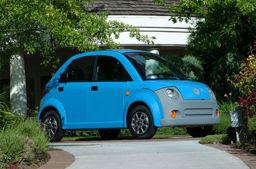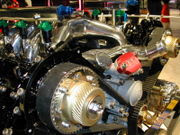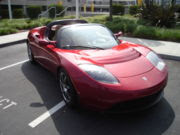This contrasts with external combustion engines, such as steam engines and Stirling engines, which use an external combustion chamber to heat a separate working fluid, which then in turn does work, for example by moving a piston.
The term Internal Combustion Engine (ICE) is almost always used to refer specifically to reciprocating engines, Wankel engines and similar designs in which combustion is intermittent. However, continuous combustion engines, such as jet engines, most rockets and many gas turbines are also internal combustion engines.
The first internal combustion engines did not have compression, but ran on air/fuel mixture sucked or blown in during the first part of the intake stroke. The most significant distinction between modern internal combustion engines and the early designs is the use of compression and in particular of in-cylinder compression.
1509: Leonardo da Vinci described a compression-less engine.
1673: Christiaan Huygens described a compression-less engine.
17th century: English inventor Sir Samuel Morland used gunpowder to drive water pumps.
1780's: Alessandro Volta built a toy electric pistol in which an electric spark exploded a mixture of air and hydrogen, firing a cork from the end of the gun.
1794: Robert Street built a compression-less engine whose principle of operation would dominate for nearly a century.
1806: Swiss engineer François Isaac de Rivaz built an internal combustion engine powered by a mixture of hydrogen and oxygen.
1823: Samuel Brown patented the first internal combustion engine to be applied industrially. It was compression-less and based on what Hardenberg calls the "Leonardo cycle," which, as this name implies, was already out of date at that time.
1824: French physicist Sadi Carnot established the thermodynamic theory of idealized heat engines. This scientifically established the need for compression to increase the difference between the upper and lower working temperatures.
1826 April 1: The American Samuel Morey received a patent for a compression-less "Gas Or Vapor Engine".
1838: a patent was granted to William Barnet (English). This was the first recorded suggestion of in-cylinder compression.
1854: The Italians Eugenio Barsanti and Felice Matteucci patented the first working efficient internal combustion engine in London (pt. Num. 1072) but did not go into production with it. It was similar in concept to the successful Otto Langen indirect engine, but not so well worked out in detail.
1860: Jean Joseph Etienne Lenoir (1822 - 1900) produced a gas-fired internal combustion engine closely similar in appearance to a horizontal double-acting steam beam engine, with cylinders, pistons, connecting rods, and flywheel in which the gas essentially took the place of the steam. This was the first internal combustion engine to be produced in numbers.
1862: Nikolaus Otto designed an indirect-acting free-piston compression-less engine whose greater efficiency won the support of Langen and then most of the market, which at that time, was mostly for small stationary engines fueled by lighting gas.
1870: In Vienna Siegfried Marcus put the first mobile gasoline engine on a handcart.
1876: Nikolaus Otto working with Gottlieb Daimler and Wilhelm Maybach developed a practical four-stroke cycle (Otto cycle) engine. The German courts, however, did not hold his patent to cover all in-cylinder compression engines or even the four stroke cycle, and after this decision in-cylinder compression became universal.
1879: Karl Benz, working independently, was granted a patent for his internal combustion engine, a reliable two-stroke gas engine, based on Nikolaus Otto's design of the four-stroke engine. Later Benz designed and built his own four-stroke engine that was used in his automobiles, which became the first automobiles in production.
1882: James Atkinson invented the Atkinson cycle engine. Atkinson’s engine had one power phase per revolution together with different intake and expansion volumes making it more efficient than the Otto cycle.
1891 - Herbert Akroyd Stuart built his oil engine, leasing rights to Hornsby of England to build them. They build the first cold start, compression ignition engines. In 1892, they installed the first ones in a water pumping station. An experimental higher-pressure version produced self-sustaining ignition through compression alone in the same year.
1892: Rudolf Diesel developed his Carnot heat engine type motor burning powdered coal dust. 1893 February 23: Rudolf Diesel received a patent for the diesel engine.
1896: Karl Benz invented the boxer engine, also known as the horizontally opposed engine, in which the corresponding pistons reach top dead centre at the same time, thus balancing each other in momentum.
1900: Rudolf Diesel demonstrated the diesel engine in the 1900 Exposition Universelle (World's Fair) using peanut oil (see biodiesel).
1900: Wilhelm Maybach designed an engine built at Daimler Motoren Gesellschaft—following the specifications of Emil Jellinek—who required the engine to be named Daimler-Mercedes after his daughter. In 1902 automobiles with that engine were put into production by DMG.
Applications
Internal combustion engines are most commonly used for mobile propulsion in automobiles, equipment, and other portable machinery. In mobile equipment internal combustion is advantageous, since it can provide high power to weight ratios together with excellent fuel energy-density. These engines have appeared in transport in almost all automobiles, trucks, motorcycles, boats, and in a wide variety of aircraft and locomotives, generally using petroleum . Where very high power is required, such as jet aircraft, helicopters and large ships, they appear mostly in the form of turbines.
They are also used for electric generators (i.e. 12 V generators) and by industry.

















